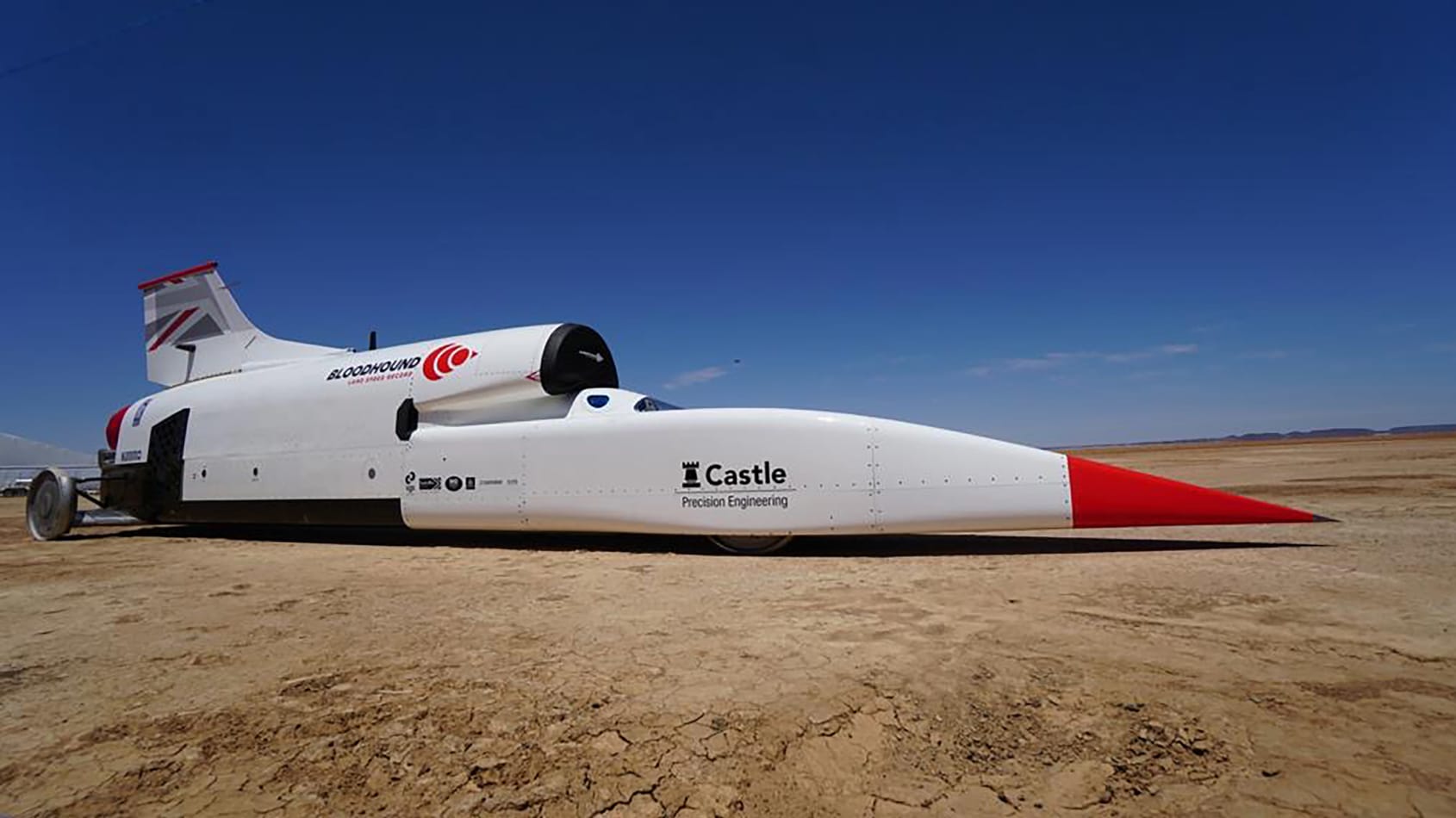Bloodhound LSR hits 742kmph in testing – 1609kmph attempt edges closer
The Bloodhound LSR has finally touched down on South African sand, and testing is well underway

One could say that the Bloodhound project has had its fair share of ups and downs, almost coming to a complete close late last year when funds ran dry. Despite initial fears, over a decade of work was saved by British entrepreneur Ian Warhurst, acquiring the project for an undisclosed sum in efforts to keep the 1000mph (1609kmph) dream alive. Last month, it touched down in South Africa, and testing has already begun.
Upcoming tests will take the Bloodhound to 500mph+ (805kmph), taking data from hundreds of sensors to analyse performance and stability, whilst also assessing its ability to slow down – AP Racing wheel brakes, one or both drag parachutes and its air brakes will all be put to the test ahead of the record attempt in 12-18 months’ time.
The latest test run called for the use of full afterburner and all 54,000bhp, helping the LSR achieve a peak speed of 742kmph, exceeding the 724kmph target. Though plans were to push for over 800kmph later in the day, post-run inspection found minor damage on a titanium suspension covering, postponing the attempt.
Like scenic locations and powerful cars? Follow us on Instagram, Facebook and Twitter
Bloodhound LSR engineering director, Mark Chapman, said: ‘Newquay was all about getting up to speed and finding out how quickly we could get the engine to full power and accelerate using max reheat. Andy [Green] was on the throttle for two seconds to reach 200mph (322kph) in eight seconds. Here at the Hakskeenpan on a ten-mile (16km) track we can accelerate for much longer, achieve higher speeds and investigate the car’s stability, performance and drag, all crucial as we move towards setting a new world land speed record.’
Powering the machine is a Rolls-Royce EJ200 jet engine from a Eurofighter Typhoon, alongside an additional cluster of rockets to help it reach the magic 1000mph (1609kmph). Such a figure would eclipse the 763.035mph (1228kmph) record set by Thrust SSC by quite some margin, firing it across the desert at 447 metres per second – that’s enough to travel the length of a football field in 0.234sec, and the entire length of Wales (274km) in just 10 minutes.
Despite the cutting-edge tech, current plans have a 560bhp Jaguar V8 at the heart of LSR. Pumping fuel to the jet engine requires rather a lot of power, meaning such an engine is the natural, cheapest place to turn – hopes are to replace this with a more space-efficient electric motor and batteries, technology that didn’t exist when the project began a decade ago.


